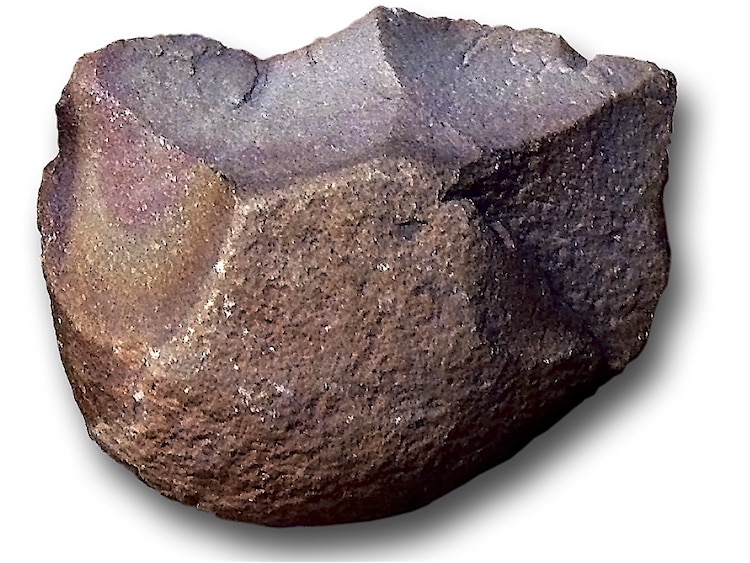
An example of an Oldowan tool. (Photo: Wikimedia Commons, Public domain)
Humans often think ourselves different from the animal kingdom, differentiated by our ability to think and create with tools. But in reality, apes, otters, birds, octopuses, and many other animals use tools, too. In fact, beyond not being the only modern creatures to use tools, humans were not event the first. Discoveries of stone tools have shown that early hominids, not “human” members of the later Homo genus, used stone flake tools in daily life.
One style of early tools is known as Oldowan tools. Across Europe and Asia, Lower Paleolithic creators utilized stone tools. This period spanned about 1.7 million to 2.9 million years ago. The “knapped” tools were created by a dangerous process of shaping flint stone. Homo habilis and other early human species would have used these stones to hew meat, wood, and work other materials.
Yet this genre of stone tools are not even the oldest. About 3.3 million years ago, a different species of ancient creature worked stone into useful shapes. Discovered at the Lomekwi 3 site in West Turkana, Kenya, the stone flakes are the oldest extant stone tools ever discovered. Discovered in 2011, the tools remain a source of fascination. They were likely created by one of two hominim species. Kenyanthropus platyops was an ancient species which lived in the region, which Mary Leaky and other researchers discovered in 1999.
A contemporary of that species, the Australopithecus afarensis, may also have created the tools. This latter species includes Lucy, the famous skeleton discovered in 1974. Both species lived in similar regions at the same time, but differences in their anatomy suggest they may have had different diets. Such differentiation would reduce competition. Regardless, whoever crafted these ancient tools, they predate the genus of modern humans, making the history of tools a very long one.
The earliest stone tools ever discovered were made by hominids before humans (of the genus Homo) existed.

Lake Turkana, across Kenya and Ethiopia, where Lomekwi is on the west side. (Photo: Wikimedia Commons, Public domain)
h/t: [IFL Science]
Related Articles:
New Evidence of Earliest European Humans Discovered in French Cave
Researchers Discover That Humans Are 33,000 Years Older Than We Thought
10,000-Year-Old Skeleton Found in Britain Has a Modern-Day Descendant Living Close By
Oldest Neanderthal Engravings Have Been Preserved in a Cave for 57,000 Years
